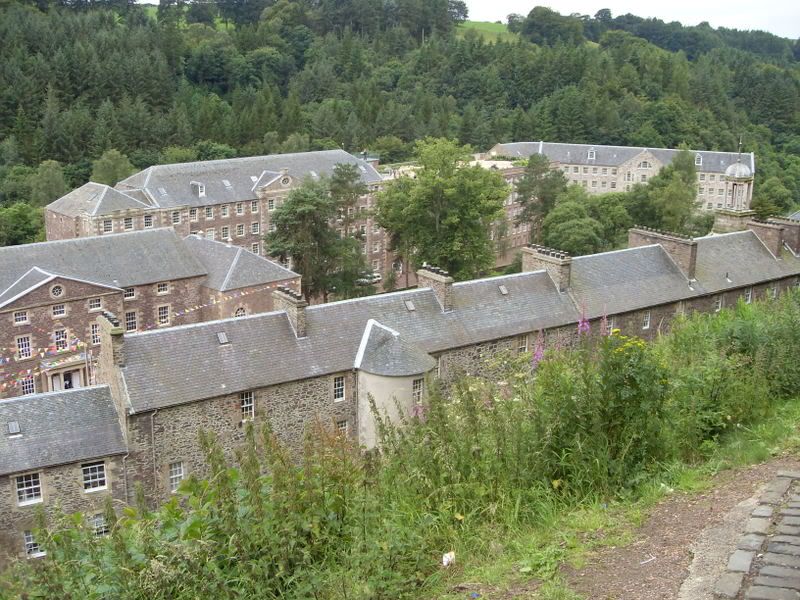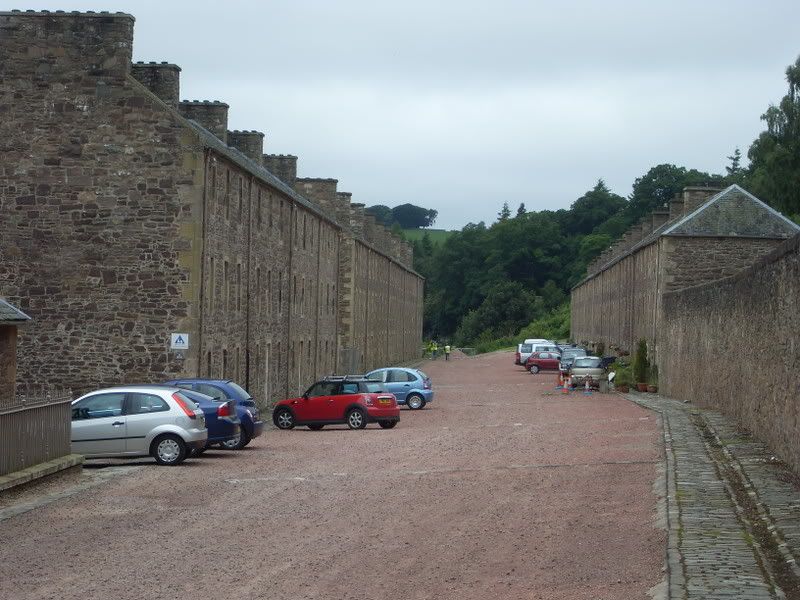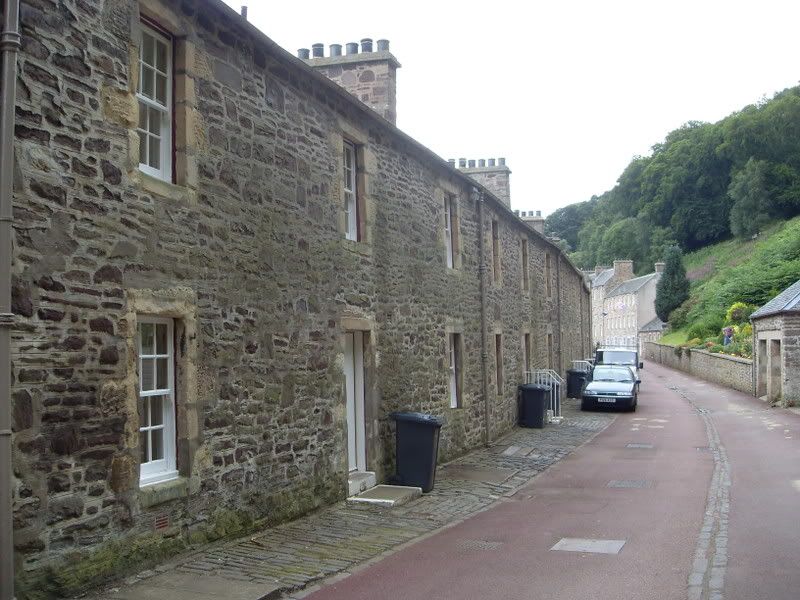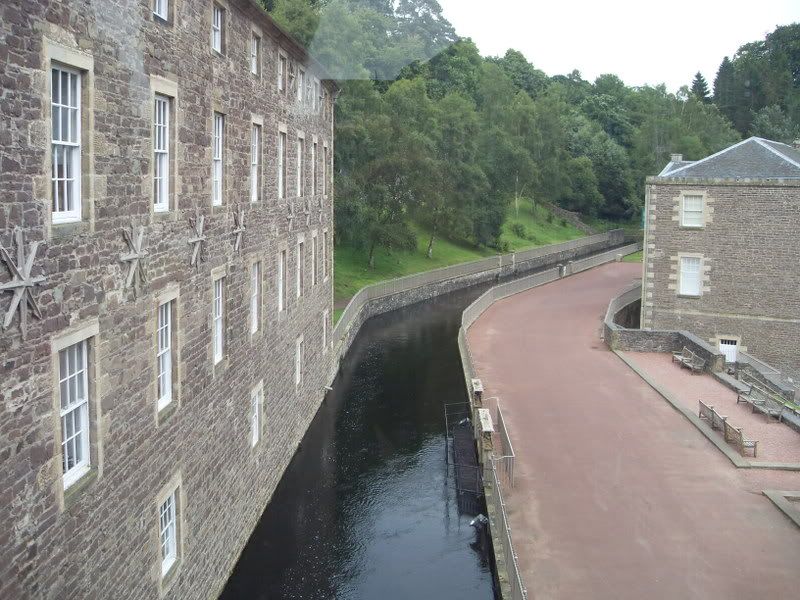Near Lanark the River Clyde tumbles down a series of waterfalls through about two miles of glacial gorges and this is the point where it changes from being a meandering river of the rural southern uplands to an industrialised river of the central lowlands of Scotland. At the bottom of the series of falls textile mills were erected in the late seventeen hundreds, and a township was constructed including millworkers' houses, a shop and a school, all known as New Lanark.
A street in New Lanark, with millworkers' flats (apartments)
Millworkers' cottages.
Water power was used initially by drawing water off the River Clyde at a weir and through a lade, though later steam was used. This Petrie steam engine was built in 1911.
This spinning mule by Platt Brothers & Co. of Oldham, Lancashire in 1891 is capable of spinning 392 cotton threads simultaneously.

The new building, constructed in 1798, including additional workers' housing.
The Mill Lade
The boiler house
Dundaff Falls are situated near the boiler house at New Lanark and are the lowest of the series of falls.
A trail begins near the boiler house and rises up along the side of the gorge. A short distance up is the Mill Weir where water is extracted into the Mill Lade.

























Bookmarks